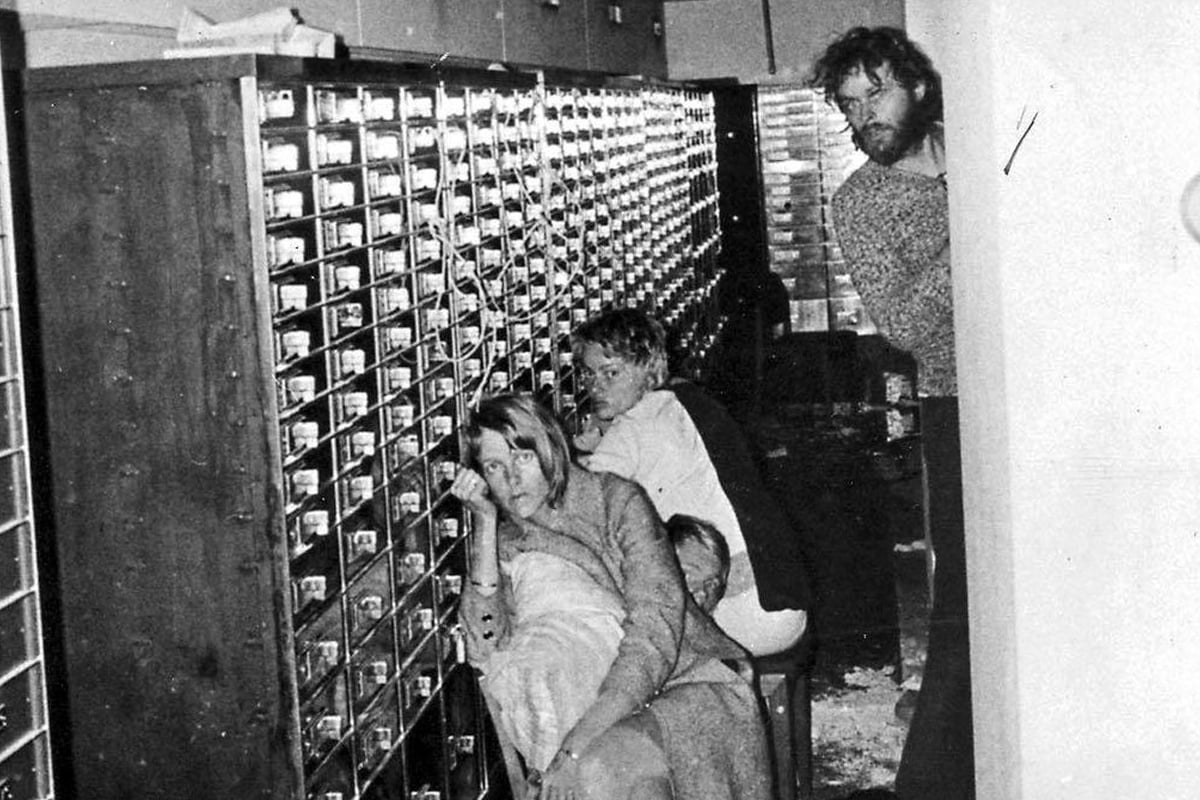
For six days inside a Stockholm bank, three women and one man were held captive by two armed robbers.
They were holed up inside a cramped bank vault, while the ordeal was broadcast live to Sweden and the world.
It started on the morning of August 23, 1973. The staff of Sveriges Kreditbanken, one of the country’s biggest banks, went about their days as normal: Piling papers, serving customers and chatting.
Check out the trailer for Stockholm, based on the real-life bank heist that led to the term Stockholm syndrome. Post continues below video.
Then 32-year-old Jan-Erik ‘Janne’ Olsson, carrying a folded jacket and a suitcase, entered the bank. The jacket concealed a loaded sub-machine gun and his case was full of ammunition, explosives and rope.
He pulled out his gun and fired it at the ceiling: “The party has just begun!” he shouted in English, disguising his voice with an American accent.
After wounding a policeman who had responded to a silent alarm, Olsson took four bank employees hostage. He – a safe-cracker who did not return to prison after a furlough from his three-year sentence for grand larceny – made his demands: He wanted more than $700,000 in Swedish and foreign currency, a getaway car and the release of his friend Clark Olofsson, who was serving time for armed robbery and acting as an accessory in the 1966 murder of a police officer.
Police obliged. Before long, Olofsson was released and delivered to Olsson to assist. Police also provided the ransom and a blue Ford Mustang for the getaway. The only thing police denied was Olsson’s demand to leave with his hostages.


Top Comments
It feels like we’ve only got half an article here. No mention of any psychological studies or research, nothing about how or why it happens?
I think the psychology comes in naturally through the podcast.
It’s not actually a really syndrome, no study has ever proven that it can be replicated. Basically in this case the criminals were quite nice to the hostages (and particularly the one who came in to ‘resolve’ the situation), the guy was charming, and the police showed absolutely no concern for the hostages. The hostages told police they were happy to leave with the kidnappers to end the siege, that they felt completely safe, but the police refused to budge, After several days of the police happily risking the lives of the hostages, then tear gassing them, and the criminals treating them as equals, sharing rations etc, and sticking to their word, the hostages just concluded that they were more likely to be killed by the police than the kidnappers. It wasn’t actually some psychological anomaly- it was an incredibly botched operation by the police. When you add the fact that the majority of Swedish people believe in reform for criminals not lifelong condemnation, the outcome is actually pretty understandable. It became a popular term mainly because of the drama around the incident and its use in bond movies etc.
Wow, seriously? I’ve never heard any of that before! Now *that* would be an interesting article!
I thought the same thing - more like an extended ad for the film than an interesting article on the "syndrome".